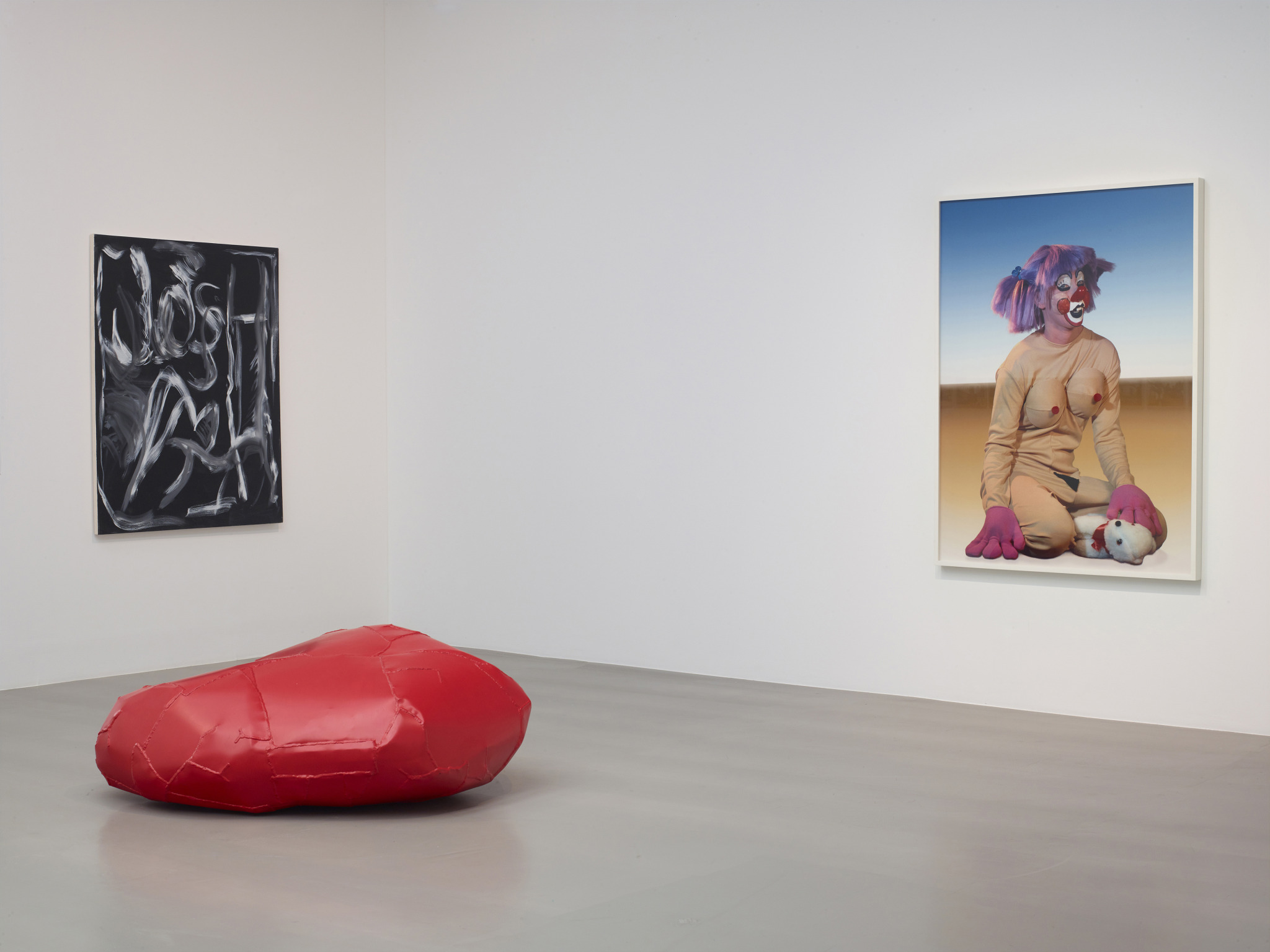In the text presenting the exhibition "00s. Cranford Collection: The 2000s" at the MO.CO in Montpellier, France, the following are evoked:
The 9/11 attacks of 2001 and the notion of a "clash of civilisations" (Afghanistan, Iraq)
The first major pandemics (SARS in 2002)
The first face transplant in 2005
The financial crisis of 2008
The election of Barack Obama in 2008
The emergence of China as an economic power
The exponential development of digital technology and the internet
The gradual blurring of the public and private spheres (from reality television to social media)
Three positives, three negatives, and two left to your discretion, then (for a perfect balance we should add the Spice Girls getting back together between 2007 and 2008).

Vues de l'exposition "00s. Collection Cranford : les années 2000" / courtesy Collection Cranford / MO.CO. Montpellier Contemporain
Until January 31, the MO.CO in Montpellier is hosting the exhibition "00s. Cranford Collection: The 2000s". Whilst the events are too recent to attempt to summarise this period through a "single narrative", the path chosen here is to simply re-establish "the dialogue engaged in by the artists with their time".
And the Cranford collection provides the material. Founded in 1999 in London by Muriel and Freddy Salem – originally from Lebanon – the collection on show near Regent's Park brings together 700 artworks from the 1960s to today, 80 of which by 44 different artists have been brought to Montpellier. Belgian curator Anne Pontégnie, who has looked after the collection since 2011, gives us some clues.
How could you define the "line" of the collection?
The collection has evolved over time. At first it was a tool for learning and being part of a time and space: London at the beginning of the 2000s, with the development of the contemporary art scene, the Tate Modern, Frieze art fair and the YBAs. Gradually it opened out on the world, essentially the German scene of Richter to Kippenberger to Trockel and Oehlen, then the American scene with Christopher Wool, Glenn Ligon, Jim Hodges, Wade Guyton and Laura Owens. For ten years, the collection has focused on rereading the twentieth century through long-neglected names such as Carol Rama, Marisa Merz, Lynda Benglis and Maria Laasnig. The presence of female artists is one of the pillars of the collection.

Albert Oehlen, 3 Amigos I 2000/2006 Oil on canvas 280 x 230 cm © Adagp, Paris, 2020
Do you also wish to highlight talent that has so far gone relatively unrecognised?
Not as a project in itself, but as a way of learning to look differently. An artist like Frank Bowling who recently joined the collection provided another perspective on the history of abstraction.
The collection is focused on western artists – is the globalisation of the art world bringing about evolution?
It's not for lack of interest in the vocabularies of other cultures, but for lack of knowledge. We preferred to stay focused on the histories for which we have the tools to understand. Female artists such as Carol Rama, Maria Lassnig and Lynda Benglis bring, from the West, minority perspectives that oblige us to make a shift too, if only conceptually as opposed to geographically.

Vues de l'exposition "00s. Collection Cranford : les années 2000" / courtesy Collection Cranford / MO.CO. Montpellier Contemporain
Do you think that the events that hit the West over the last two decades have given new "material" to these artists, a form of new legitimacy to using a sociopolitical background to their research? Is this especially the case in a period in which figuration has made a comeback?
Absolutely. I think even the role of art is undergoing transformation. After the utopia of modernist autonomy, art can once again find a function. For me, the last Documenta highlighted this possible change very well.
How did you decide to concentrate on the works of the 2000s, and what did the selection process with the MO.CO curators consist of?
Very systematically, year by year. The choice became simple once a conceptual system was in place. The nice surprise was to see the works respond to each other despite the rigidity of the organisation of the rooms year by year.
The chronological hanging brings together artists who emerged in that period as well as the stars of the decade, opening with an installation by Wolfgang Tillmans and drawing to a close with a piece by Kelley Walker, "two emblematic artists of the period".

Wolfgang Tillmans, Einzelganger III 2003 C-type colour print 237 x 181 cm © Wolfgang Tillmans, courtesy Maureen Paley

Kelley Walker, Untitled 2008 Four-colour process silkscreen on canvas with The Chief; Friday, July 18, 2008 213,4 x 165,1 cm © Kelley Walker. Courtesy Paula Cooper Gallery, New York
In Montpellier, the vision of Anne Pontégnie and Muriel and Freddy Salem meets that of MO.CO curators Vincent Honoré (Exhibitions Director), Victor Secretan (Senior Curator), Anya Harrison (Curator), and Rahmouma Boutayeb (Head of Projects), assisted by Justine Vic, under the artistic direction of Nicolas Bourriaud.
Featured in the exhibition are;
Kai Althoff, Francis Alÿs, John Baldessari, Louise Bourgeois, Louise Bourgeois & Tracey Emin, Glenn Brown, Monster Chetwynd, Phil Collins, Abraham Cruzvillegas, Edith Dekyndt, Ólafur Elíasson, Isa Genzken, Wade Guyton, Guyton/Walker, Rachel Harrison, Mona Hatoum, Thomas Hirschhorn & Marcus Steinweg, Damien Hirst, Sergej Jensen, Mike Kelley, Karen Kilimnik, Michael Krebber, Glenn Ligon, Sarah Lucas, Albert Oehlen, Gabriel Orozco, Damian Ortega, Raymond Pettibon, Ken Price, Sigmar Polke, Walid Raad / The Atlas Group, Gerhard Richter, Ugo Rondinone, Edward Ruscha, Thomas Schütte, Cindy Sherman, Josh Smith, Wolfgang Tillmans, Rirkrit Tiravanija, Rosemarie Trockel, Kelley Walker, Jeff Wall, Rebecca Warren, Franz West, Christopher Wool.
cover image: Isa Genzken, Orang-Utan 2008, Stuffed animal, toy horse, plastic, spray paint, acrylic, metal, fabric, MDF 175 x 100 x 130 cm Courtesy Galerie Buchholz, Berlin/Cologne/New York © Adagp, Paris 2020









